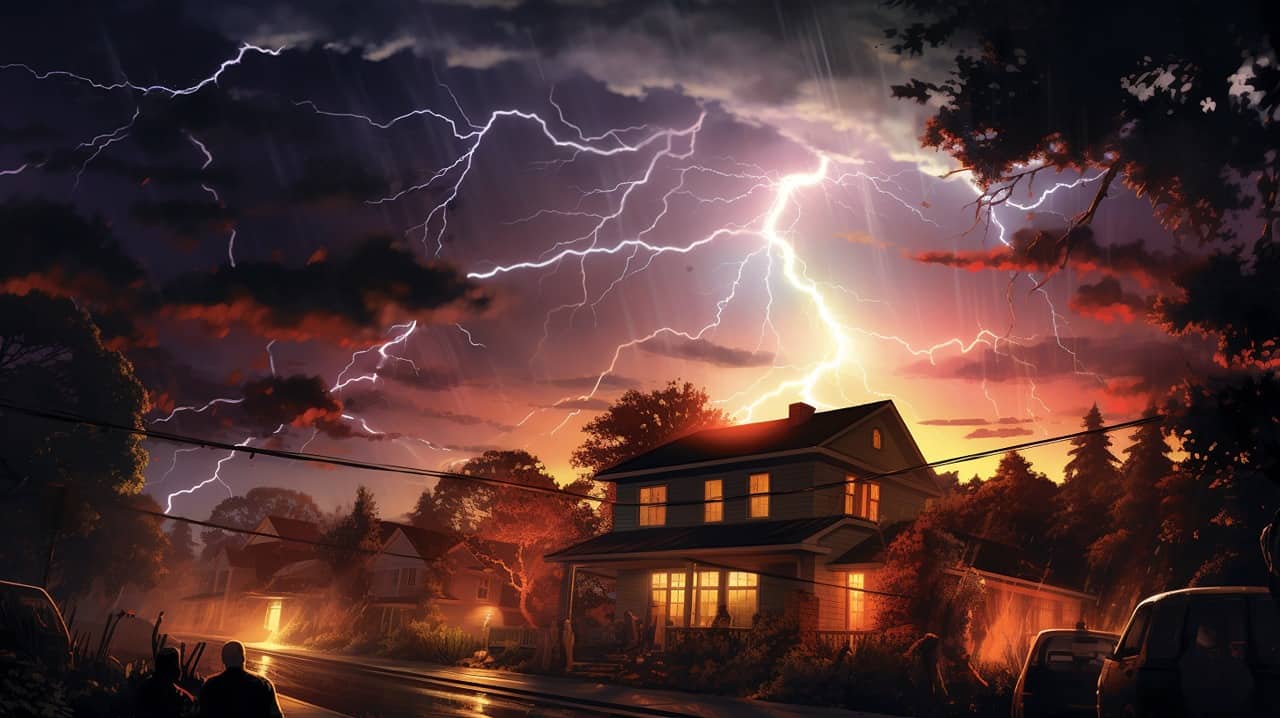Ever find yourself relentlessly replacing electronics due to those irksome power surges? Don’t worry, you’re not alone. These unpredictable voltage spikes have a knack for wearing out appliances at an alarming rate.
But take heart, after immersing myself in some extensive research; I stumbled upon a comprehensive solution – whole house surge protectors! In this blog post, I’ll share everything there is to know about them: how they work, their pros and cons, the different types available on the market, as well as their cost-effectiveness.
Why jump in? Because investing in one could be your next smart move. So buckle up, and let’s go explore this promising ally against electrical wear and tear together!
Key Takeaways
Whole house surge protectors stop power surges. They keep your home safe.
Different things cause power surges. This includes storms and big gear starting and stopping.
There are a few types of surge protectors. Whole-house ones cover the whole house, and circuit ones guard specific circuits in the home.
Whole house surge protectors cost around $500 to buy and install. They save money over time by keeping costly electronics safe from damage caused by power surges.
Table of Contents
Understanding Whole House Surge Protectors
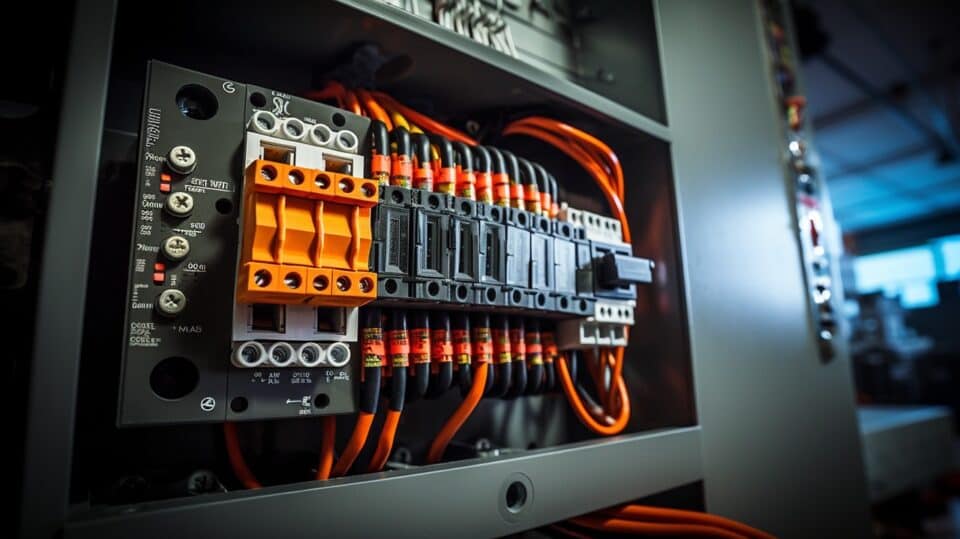
A whole house surge protector is a device installed in your home’s electric panel, designed to protect all appliances and electrical systems from voltage surges. When it senses an overvoltage event, it instantly diverts the excess energy to the ground wire, preventing damage to circuit boards in your devices.
These can be caused by lightning strikes or power fluctuations from high-surge events such as severe storms and grid outages.
How it works
A whole-house surge protector connects to your home’s main breaker panel. It stops big surges of power from entering your home. Think of it as a big shield, keeping out unwanted energy.
Any extra power gets sent along the ground wire, back into the earth where it can’t harm anything. But don’t be fooled! Some extra voltage might still get through — about 15%. That doesn’t mean you’re left in danger, though; plug-in surge protectors handle those smaller leaks.
Like goalies in soccer, they stop any last bits of excess power that sneak past the first line of defense. But none of this would work without correct grounding; it is key for all parts to do their job right and safeguard your wiring and appliances.
The Causes of Power Surges
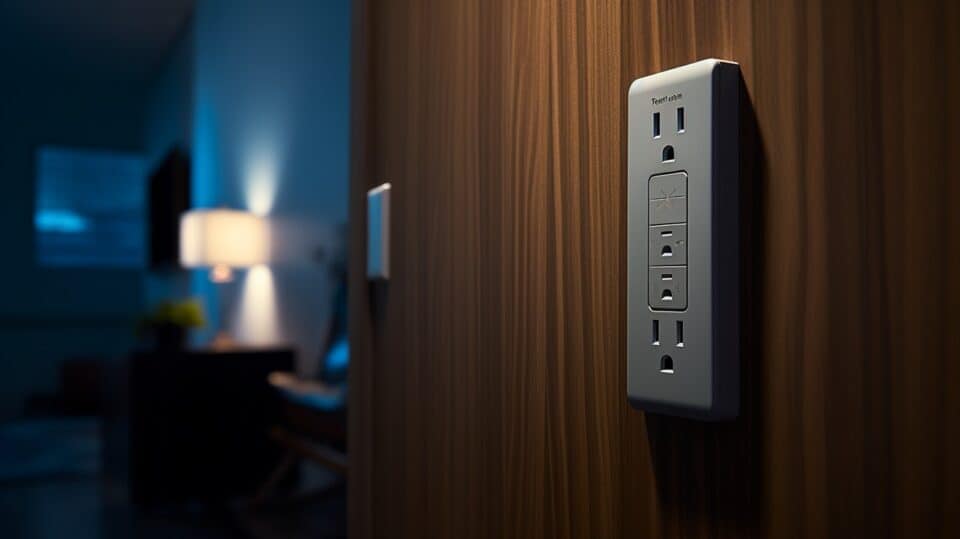
I want to talk about what causes power surges.
- Storms: Severe storms can cause high-surge events.
- Downed Power Lines: These often create voltage surges.
- Use of Heavy Devices: Appliances with large motor loads, like air conditioners and laser printers, can lead to power fluctuations when they cycle on and off.
- Lightning Strikes: These are the most powerful and feared causes of power surges, but they’re not the most common.
- Skewed Electricity Use: Sudden changes in your home’s electricity use can also cause surges.
Types of Surge Protectors
There are several types of surge protectors, each designed to protect various appliances in your home. The most prevalent among them are the Whole-Home Surge Protectors, which offer comprehensive coverage, and Circuit Protectors that guard specific circuits against power surges.
Understanding these different types will help you make an informed decision while choosing the right protection for your home’s electrical system.
Whole-Home Surge Protectors
Whole-Home Surge Protectors are great for saving money and keeping your gear safe. They work by sending extra voltage to the ground wire. This brings back normal power flow when safe levels return.
But they are not perfect! Some excess, around 15 percent, might sneak past. So it’s smart to use plug-in protectors too. These devices can wear out from big surges, though! Checking indicator lights helps you know if a protector is still doing its job right.
Circuit Protectors
Circuit protectors are your first line of defense against power surges. They are part of the main breaker panel in your home. When a surge happens, these little guards spring into action.
They stop extra voltage from reaching your devices and appliances. The excess power gets sent down to the ground wire instead. That’s how circuit protectors keep everything safe in your house! At times, high-surge events occur – like lightning strikes or severe storms.
During such moments, it is the circuit protector’s job to save your electronics from damage.
The Pros & Cons of Whole House Surge Protectors
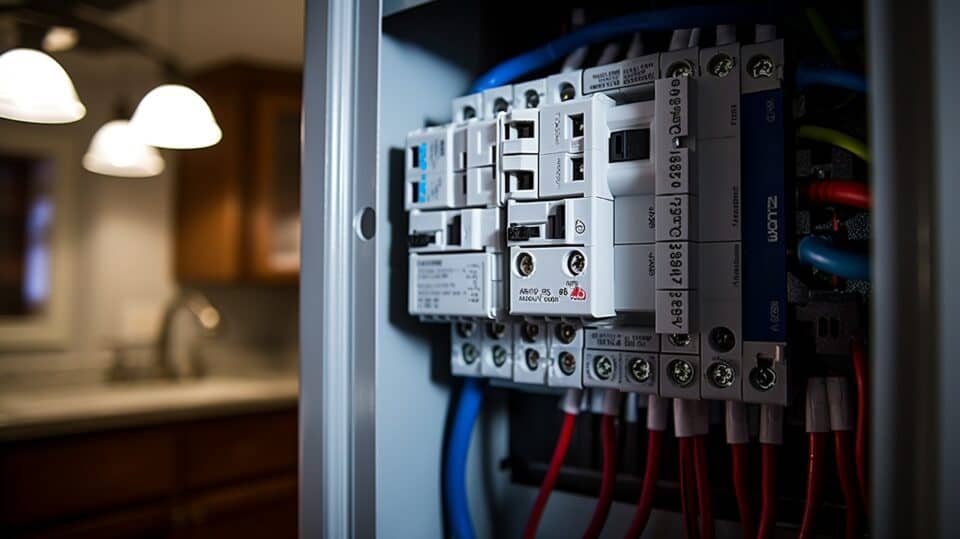
Looking at the pros, whole-house surge protectors provide comprehensive coverage for all wired devices in your home and can handle larger power surges that smaller surge protectors can’t.
They extend the life of your appliances by safeguarding them from frequent low-level surges. On the other hand, they require professional installation by an electrical contractor, which could be costly.
Also, they may not cover direct lightning strikes or very high-surge events if not specifically rated for such occurrences.
Pros of Whole House Surge Protectors
Whole house surge protectors have many good points. They shield your home from large lightning strikes and smaller surges. Tiny surges can hurt your costly electronics and appliances over time.
Yet, these protectors help to block them. Also, they guard all the electronics in your house, not just one or two items. That’s better than normal power strip surge protectors! Most surges start inside a building.
So, having a whole-house protector is key to keeping out damage from 80% of all surges! Lastly, if you live where there are many storms or grid blackouts, these protectors give strong defense against both small and high-surge events.
Cons of Whole House Surge Protectors
Whole house surge protectors are not perfect. They cost a lot of money to buy and set up. A pro has to install them in your home, which can add up. The cost can reach about $500 for an average house with 200-amp service.
Also, these units may not stop all power surges from harming your stuff. Some strong surges like lightning strikes might still cause damage even if you have a whole-house suppressor.
So, having one does not mean all electronics are always safe. Now and then, they require replacements, too, as their energy-saving ability wears down over time.
Cost of Whole-House Surge Protectors
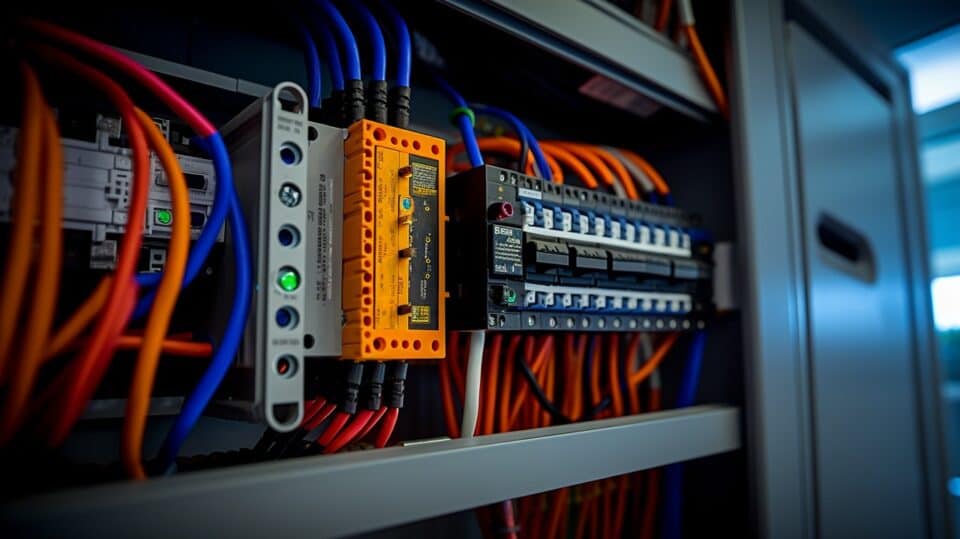
You might wonder how much a whole-house surge protector costs. The price often lies around $500. This amount includes the cost of having a licensed electrician do the installation in a regular house with 200-amp service.
But don’t let the price scare you off! It’s worth every cent to protect your home from power surges and voltage spikes that can damage electronic appliances, computer networks, and even circuit boards all over your home.
Buying one is not like buying an ordinary power strip or extension cord. Whole-home surge protection offers more safety for things with plugs in your house, like computers, ovens, refrigerators, or air conditioners.
You’ll save money in the end by protecting these expensive items from unexpected power problems.
Is Investing in Whole House Surge Protectors Worth It?
Yes, it is worth it to buy whole-house surge protectors. They guard your home from big and mini-surges. Mini-surges can harm pricey gear over time. Power strip surge protectors are not as good.
Whole house surge protectors cut down both small and high-surge events well. If you live in a place with many bad storms or grid outages, these help a lot. The cost of broken gear can go beyond $10,000! These systems bring strong and cheap protection over time.
FAQs About Whole House Surge Protectors
What are whole house surge protectors?
Whole house surge protectors are devices that stop power surges from hurting home appliances like computers, microwaves, and air conditioning units.
Can anyone install a whole-house surge protector?
No, only a licensed electrician should install your surge protector. They make sure the wiring is grounded and safe for use.
How can a whole-home surge protector save me money?
Surge protectors guard against voltage spikes that harm electronics in your home, which could save you replacing or repairing costs.
How do they provide protection to my entire home?
Whole house suppressor connects to your home’s electrical panel, protecting both hot, neutral ground lines from harmful surges throughout all circuits in your household.
Is there any guarantee provided with these systems?
Yes! Often, when you buy a whole house Surge-Protection system, it comes with a warranty from the maker itself or through Home Warranty Company covering possible damages caused by failures.
What if I already have power strips with built-in surge protection? Do I still need a whole-home one?
Even though individual power strips give basic safety for gadgets plugged into them, they can’t guard fixed appliances like ovens or air conditioning units – so getting Whole-House Surge Protectors ensures complete safeguarding of all valuable electronics at once.
